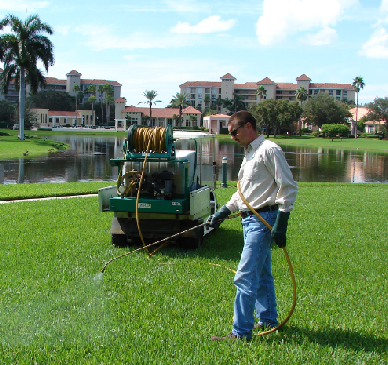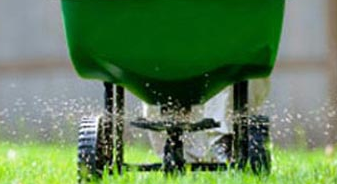
Procareli@verizon.net
(727) 821-7695
Pest Control and Fertilization
Pest Control :
Our division of entomology and disease is managed by our Certified Pest Control Operators and implemented by well trained licensed technicians.
Frequent site inspections are required to analyze any pest problems that may exist. When signs first appear the problem is naturally small. The smaller the problem, the smaller the measure of control required. Pest control selection is based on the extent of the problem and the best product available for control. We apply insecticides only if necessary.
Frequent site inspections are required to analyze any pest problems that may exist. When signs first appear the problem is naturally small. The smaller the problem, the smaller the measure of control required. Pest control selection is based on the extent of the problem and the best product available for control. We apply insecticides only if necessary.
If we choose to make an application, the timing and placement are critical for control. Our research has found that we may reduce chemical use if we apply insecticide when the insects are at the stage when they are easiest to control and only on the correct target area.
Regular site monitoring enables us to achieve a thorough awareness of key pests. Creating a data base of pest problems on each property helps us to predict the cycle of future pest infestations. This environmental friendly method enables us to manage our customers’ landscape in a more affordable and effective manner.
Fertilization :
Proper fertilization can be a landscaper’s best friend. Understanding soils and fertilizer is a must to landscape management contractors who desire any degree of long term success.
The soils of coastal Florida can have considerable difference even sometimes on the same property. Soils can be well drained or poorly drained. Seldom are they ideally drained. They can be acid or alkaline. They can be very high in organic or extremely low in organic.
The soils of coastal Florida can have considerable difference even sometimes on the same property. Soils can be well drained or poorly drained. Seldom are they ideally drained. They can be acid or alkaline. They can be very high in organic or extremely low in organic.
Many of our Tampa Bay area properties are on lands filled from bay bottom dredging. In addition, in planter beds along foundations we often find buried mortar, tar, or concrete that can be toxic to plants.
The percolation or soil drainage capabilities determine the type of nitrogen to use and the frequency of fertilization applications. Organic content determines the total plant food analysis and the frequency of applications. Soils low in organic content have poor nutrient retention properties therefore they should be fed more frequent with a lower analysis plant food.
After making note of the drainage abilities and the organic content we then do a chemical analysis of the soil to record the potential hydrogen (pH) and the soluble salt content. This test also shows the levels of plant food elements.PH is a very important factor. Certain plant foods become locked up and not available with too high a pH or too low a pH. With a pH below 5 plant foods such as phosphorous, potash, and magnesium have limited availability to plants. With a pH above 7, iron and manganese become locked up.
In summation, you must first evaluate the soil including its drainage characteristics, its organic content, pH, and chemical makeup. You are now ready to make applications of the desired plant food minor elements at frequencies best suited for the respective property’s soil conditions and plant species.
In summation, you must first evaluate the soil including its drainage characteristics, its organic content, pH, and chemical makeup. You are now ready to make applications of the desired plant food minor elements at frequencies best suited for the respective property’s soil conditions and plant species.

